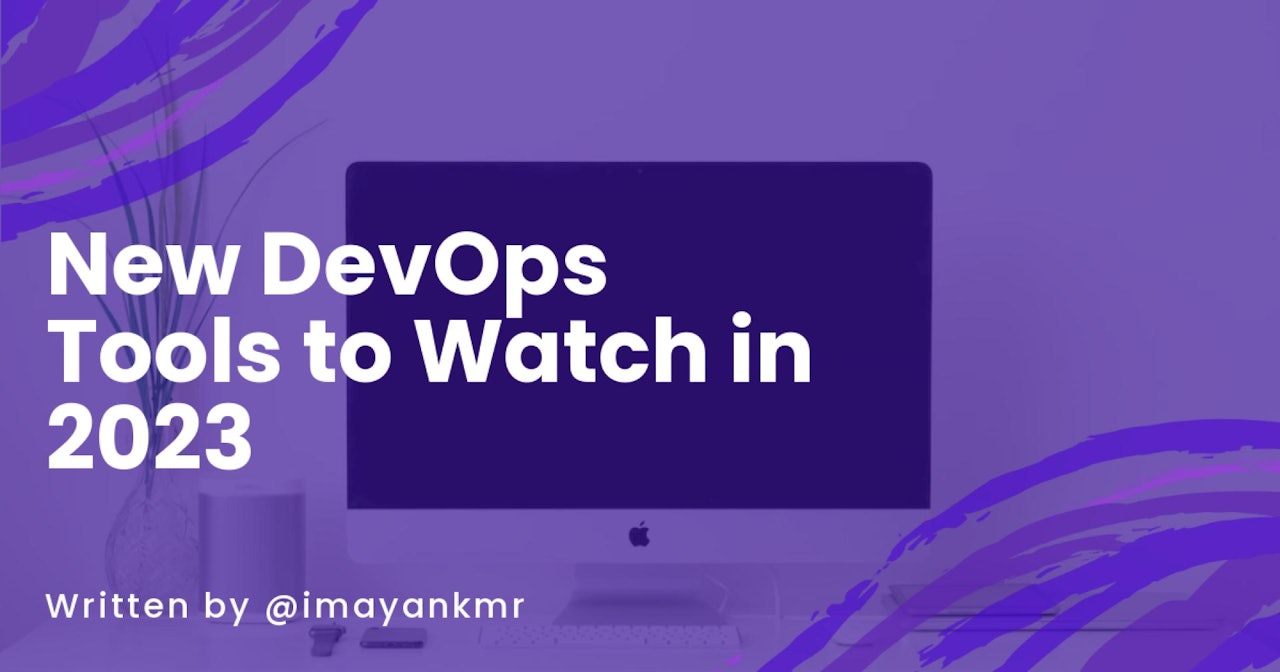.png) DevOps, a culture shift or practice that unites development and operations teams, is to turn the software development life cycle into a strategic asset for every business. It's critical to pick the appropriate tools to accomplish this goal. Numerous DevOps automation tools have been developed due to technological improvements to enhance teamwork and development. And it takes time to make the appropriate choice regarding DevOps technologies.
DevOps, a culture shift or practice that unites development and operations teams, is to turn the software development life cycle into a strategic asset for every business. It's critical to pick the appropriate tools to accomplish this goal. Numerous DevOps automation tools have been developed due to technological improvements to enhance teamwork and development. And it takes time to make the appropriate choice regarding DevOps technologies.
In this write-up, we have compiled a list of the best DevOps tools and critical features you should utilize in 2023 to strengthen your DevOps strategy.
Ansible
Ansible is an open-source tool for automating and configuring computer systems. It provides tools for configuration management, application deployment, and task execution. It can be used to manage a wide range of systems, including Linux, Unix, and Windows systems, as well as cloud environments.
Ansible is designed to be simple, requiring minimal setup and no special software or libraries on managed systems. It uses YAML syntax to describe configuration and tasks. It can automate many tasks, including installing and configuring software, creating and managing system users, and managing system resources such as services and files.
Some key features of Ansible include:
- Support for a wide range of systems: Ansible can be used to manage various systems, including Linux, Unix, and Windows systems, as well as cloud environments.
- Agentless architecture: Ansible does not require any special software or agents to be installed on managed systems, making it easy to get started and deploy to new systems.
- YAML syntax: Ansible uses YAML syntax to describe configuration and tasks, making it easy to read and understand.
- Idempotence: Ansible can ensure that tasks are idempotent, meaning that running the same task often has the same result as running it once. This makes it easier to ensure that systems are in the desired state and reduces the risk of errors.
- Extensible: Ansible includes many built-in modules for everyday tasks, and it is easy to write custom modules in Python to extend its functionality.
- Ecosystem: Ansible is part of a larger ecosystem of tools, including Ansible Tower and Ansible Galaxy, which provide additional features and resources for automating and managing systems with Ansible.
Kubernetes
Kubernetes is a versatile and customizable tool for DevOps that helps automate the deployment, scaling, and management of applications running in containers. Google originally developed it to manage its fleet of containers across its various cloud platforms. Kubernetes is used to power various platforms, including Amazon Web Services (AWS) and Azure.
Kubernetes helps DevOps teams run containers efficiently by providing scheduling, replication, and networking tools. The tool also supports multiple languages, including Python/Go/JavaScript, etc., making it easy to use if you are familiar with any one of these languages or not!
It is an open-source platform widely used for managing and deploying applications running in containers.
Kubernetes provides several benefits to organizations that use it to manage their applications and infrastructure, including:
- Improved resource utilization: Kubernetes allows you to efficiently schedule and run applications on available resources, ensuring that your infrastructure is used to its full potential.
- High availability: Kubernetes can automatically detect and replace failed container instances, ensuring that your applications remain available and running smoothly.
- Ease of deployment: Kubernetes provides tools for rolling out and rolling back applications, making it easy to deploy new versions and roll back to previous versions if needed.
- Scalability: Kubernetes makes it easy to scale applications up or down based on demand, allowing you to respond quickly to changes in workload.
- Flexibility: Kubernetes can manage various applications and infrastructure, including on-premises, cloud, and hybrid environments.
- Ecosystem: Kubernetes has a large and active developer community, with many tools and resources available for building and deploying applications on the platform.
Splunk
Splunk is a log analysis software used to monitor and analyze machine-generated data and used by developers, DevOps, and IT operations teams. Splunk can search, monitor, and analyze IT infrastructure, including servers, networks, and applications.
Some key features of Splunk include:
- Data ingestion: Splunk can ingest data from many sources, including log files, message queues, and APIs, making it easy to collect data from multiple systems and applications.
- Data indexing: Splunk can index and store large volumes of data, allowing you to quickly search and analyze data using powerful search and visualization tools.
- Real-time processing: Splunk can process data in real time, allowing you to identify and respond to events as they occur.
- Customizable dashboards: Splunk provides various tools for creating custom dashboards and visualizations, allowing you to create customized views of your data.
- Alerting: Splunk can be configured to send alerts based on specific events or conditions, allowing you to monitor and respond to issues proactively.
- Integration: Splunk can be integrated with various tools and systems, including monitoring tools, incident management systems, and security systems, allowing you to build a comprehensive view of your data.
Terraform
Terraform is a tool used for building, changing, and versioning infrastructure safely and efficiently. It is an open-source infrastructure as code (IaC) tool that allows users to define and manage infrastructure resources using configuration files.
 View Website
View Website
 View Website
View Website
 View Website
View Website
Terraform provides several benefits, including:
- Infrastructure as code: Infrastructure is defined using configuration files, which can be versioned and stored in a source control repository. This makes it easier to track changes and collaborate with others.
- Reusable configuration: Terraform configuration files can be shared and reused, making it easier to manage infrastructure consistently and predictably.
- Multi-cloud support: Terraform supports multiple cloud providers, such as AWS, Azure, and Google Cloud, making it easier to manage infrastructure across different cloud environments.
- Versioning and rollback: Terraform tracks changes to infrastructure and allows users to roll back to a previous version if necessary.
- Collaboration: Terraform makes it easy for teams to collaborate on infrastructure changes and automate resource provisioning and management.
Docker
Docker is a tool to create, deploy, and run applications using containers. A container is a lightweight, standalone, and executable package that includes everything an application needs to run, including the application code, libraries, dependencies, and runtime.
Docker provides several benefits, including:
- Lightweight: Containers are lightweight and portable, making deploying applications on different environments and platforms easier.
- Isolation: Containers provide isolation, allowing different applications to run on identical hosts without affecting each other.
- Version control: Docker allows users to specify the exact version of an application and its dependencies, making it easier to track changes and roll back if necessary.
- Automation: Docker allows users to automate the process of building, testing, and deploying applications using pre-defined scripts.
- Collaboration: Docker makes it easier for developers to share and collaborate on applications, as they can be packaged in a portable and consistent way.
- Cost-effective: Containers can optimize resource utilization and reduce costs by allowing multiple applications to share resources on a single host.
Jenkins
Jenkins is a cross-platform, open-source automation server. It is written in Java and supports multiple plugins to integrate various tools and technologies. Jenkins can automate different stages of the software development process, such as build management, testing, and deployment.
Jenkins is a popular tool for software development teams because it is easy to use and provides a wide range of features.
Some of the benefits of using Jenkins include the following:
- Jenkins is free and open-source software, making it easy to start.
- Jenkins is highly configurable and can be integrated with various tools and technologies.
- Jenkins is used for automating various stages of the software development process, which can save time and improve efficiency.
- Jenkins provides a wide range of plugins that allow easy integration with other tools and technologies.
- Jenkins has a large and active community that provides support and resources.
Chef
Chef is an open-source automation platform for configuring, deploying, and managing infrastructure. It's a tool for automating the configuration of your infrastructure as code—that is, by writing it in a programming language like Ruby or Python and then letting Chef manage it for you.
Chef provides build-time support for:-
- Downloading and installing packages from the internet (including pre-compiled binaries) package management features, such as dependency resolution
- Two-way synchronization between multiple nodes running different versions of the same software packages on other machines,
- Integration with significant test frameworks like RSpec or Test: Unit, etc.
Bottom Line
QA testing is a vital component of DevOps automation tools, and it's a field that is growing so rapidly that it can sometimes take time to know precisely where to invest your time to get the most bang for your buck. We've compiled a list of some of the industry's newest and best DevOps tools that will impact the world of DevOps over the next five years. We look forward to hearing about your favorites as well!


Comments (0)